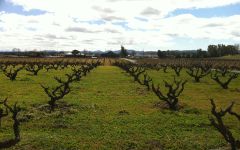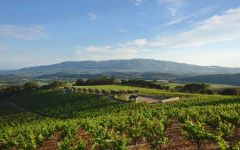Turley Rattlesnake Ridge Zinfandel (torn label) 2004
-
Robert
Parker


Product Details
Your Rating
Somm Note
Winemaker Notes
Professional Ratings
-
Robert Parker's Wine Advocate
From Howell Mountain, the 2004 Zinfandel Rattlesnake Ridge (less than 400 cases produced from a site adjacent to the well-known Black Sears Vineyard) is a terroir-based effort given the vineyard’s volcanic soils with considerable iron and white ash (known in California as tufa). At 15.9% alcohol, it is not a wimpish wine, but reveals surprising complexity with a sweet cherry, plum, and anise-scented nose, deep, rich, full-bodied flavors, gorgeous purity, and remarkable elegance as well as equilibrium. Drink it over the next 7-8 years.
Range: 91-93
Other Vintages
2017-
Robert
Parker
-
Wine
Spectator
-
Robert
Parker -
Wine
Spectator
-
Robert
Parker
-
Robert
Parker
-
Robert
Parker -
Wine
Spectator
-
Wine
Spectator
-
Robert
Parker -
Wine
Spectator
-
Robert
Parker
-
Robert
Parker
-
Robert
Parker
-
Robert
Parker







Turley Wine Cellars was founded in 1993 by Larry Turley and makes forty-seven wines, the vast majority of which are single vineyard designate Zinfandels and Petite Syrahs. By focusing on old vine vineyards in particular, Turley aims to both create and preserve California’s unique winemaking culture.
All of Turley’s vineyards are either certified organic by California Certified Organic Farmers or somewhere in the process, and the winery uses all natural yeasts in the fermentations.
Turley aims to be stewards of some of California’s most distinctive vineyards, producing authentic wines that reflect their heritage.

Unapologetically bold, spice-driven and jammy, Zinfandel has secured its title as the darling of California vintners by adapting well to the state's diverse microclimates and landscapes. Born in Croatia, it later made its way to southern Italy where it was named Primitivo. Fortunately, the imperial nursery of Vienna catalogued specimens of the vine, and it later made its way to New England in 1829. Parading the true American spirit, Zinfandel found a new home in California during the Gold Rush of 1849. Somm Secret—California's ancient vines of Zinfandel are those that survived the neglect of Prohibition; today these vines produce the most concentrated, ethereal and complex examples.

Today Cabernet Sauvignon is the star of this part of Napa’s rugged, eastern hills, but Zinfandel was responsible for giving the Howell Mountain growing area its original fame in the late 1800s.
Winemaking in Howell Mountain was abandoned during Prohibition, and wasn’t reawakened until the arrival of Randy Dunn, a talented winemaker famous for the success of Caymus in the 1970s and 1980s. In the early eighties, he set his sights on the Napa hills and subsequently astonished the wine world with a Howell Mountain Cabernet Sauvignon. Shortly thereafter Howell Mountain became officially recognized as the first sub-region of Napa Valley (1983).
With vineyards at 1,400 to 2,000 feet in elevation, they predominantly sit above the fog line but the days in Howell Mountain remain cooler than those in the heart of the valley, giving the grapes a bit more time on the vine.
The Howell Mountain AVA includes 1,000 acres of vineyards interspersed by forestlands in the Vaca Mountains. The soils, shallow and infertile with good drainage, are volcanic ash and red clay and produce highly concentrated berries with thick skins. The resulting wines are full of structure and potential to age.
Today Cabernet Sauvignon, Merlot and Petite Sirah thrive in this sub-appellation, as well as its founding variety, Zinfandel.
